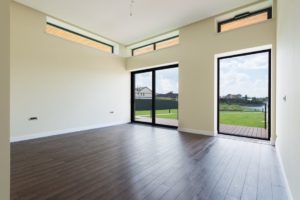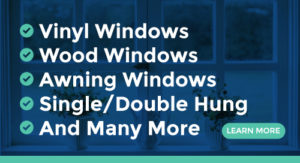
Choosing the Best Windows to Install for Your Home: A Comprehensive Guide
Windows play a vital role in enhancing the aesthetics, energy efficiency, and overall comfort of your home. When it comes to selecting the best windows for your house, it’s essential to consider various factors, such as material, style, energy efficiency, and budget. At 3WindowEstimates.com, we understand the significance of making an informed decision. In this blog, we’ll delve into the top considerations for selecting the best windows for your home.
Window Materials
The choice of window material significantly impacts the overall performance and durability of your windows. Here are some popular options:
Vinyl Windows
These are cost-effective, low-maintenance, and energy-efficient windows that resist fading, cracking, and warping. They are an excellent option for homeowners looking for affordability and easy upkeep.
Wood Windows
Wood offers timeless beauty and excellent insulation. Wood windows can be painted or stained to match your home’s style, but they require regular maintenance to prevent rot and decay.
Aluminum Windows
These windows are lightweight and ideal for modern aesthetics. However, they are not as energy-efficient as other materials and may be prone to condensation.
Fiberglass Windows
Offering strength, low maintenance, and excellent energy efficiency, fiberglass windows are an excellent long-term investment for your home.

Window Styles
Choosing the right window style can enhance the architectural appeal of your home while providing functional benefits. Here are some popular window styles:
- Double-Hung Windows: These classic windows have two operable sashes that can slide vertically, allowing for versatile ventilation control.
- Casement Windows: Hinged on one side, casement windows open outward, providing excellent airflow and unobstructed views.
- Awning Windows: Similar to casement windows, awning windows are hinged at the top and open outward. They are perfect for rainy climates, as they can be left open for ventilation even during light rain.
- Sliding Windows: Sliding windows glide horizontally, making them a space-saving option and an excellent choice for modern homes.
- Picture Windows: Fixed and non-operable, picture windows are ideal for maximizing natural light and showcasing beautiful outdoor views.
Energy Efficiency
Energy-efficient windows can significantly reduce heating and cooling costs while making your home more comfortable throughout the year. Look for the following features:
- Low-E Glass: Low-emissivity coatings help to reflect infrared light, keeping your home cooler in summer and warmer in winter.
- Multiple Panes: Double or triple-pane windows provide better insulation by creating layers of trapped air or gas between the glass panes.
- Argon or Krypton Gas Fill: These inert gases between the glass panes further improve insulation properties.
- Weatherstripping: High-quality weatherstripping ensures a tight seal to prevent drafts and air leakage.
U-Value and Solar Heat Gain Coefficient (SHGC)
The U-value measures a window’s ability to insulate, while the SHGC gauges how well a window blocks heat from the sun. Look for low U-values and SHGCs to ensure energy efficiency.
Budget Considerations
While it’s tempting to go for the most luxurious options, consider your budget and the long-term value of your investment. Remember that high-quality, energy-efficient windows can lead to substantial savings on utility bills in the long run.
Selecting the best windows for your home involves careful consideration of materials, styles, energy efficiency, and budget. At 3WindowEstimates.com, we are committed to helping you make an informed decision. By choosing the right windows, you can enhance your home’s beauty, improve energy efficiency, and create a comfortable living space for years to come. Contact us today to connect with reliable window installation companies and receive quotes for your dream windows.

Should You Replace All Windows at Once?
When considering window replacement, homeowners often face the dilemma of whether to replace all windows at once or just a few at a time. Both approaches have their merits, and the decision depends on various factors, including budget, window condition, and long-term goals. Let’s explore the advantages and considerations of each option.
Replacing All Windows at Once:
Advantages
- Consistency: Replacing all windows simultaneously ensures a uniform look across your home, enhancing its overall aesthetics and curb appeal.
- Energy Efficiency: All new windows will have the same energy-efficient features, providing consistent insulation and potential energy savings throughout your entire home.
- Cost Efficiency: Some window installation companies may offer cost incentives for replacing all windows at once, such as bulk discounts or reduced labor costs.
- Convenience: One major window replacement project may be less disruptive than multiple smaller projects over an extended period.
Considerations
- Higher Upfront Cost: Replacing all windows at once requires a more substantial initial investment compared to replacing only a few windows.
- Budget Constraints: If your budget is limited, replacing all windows might not be financially feasible.
Replacing Only a Few Windows:
Advantages
- Budget Flexibility: By replacing windows in phases, you can spread out the cost over time, making it more manageable for homeowners on a tight budget.
- Targeted Replacement: You can prioritize windows that are in the worst condition or those in high-traffic areas, ensuring immediate benefits where they are needed most.
- Opportunity for Upgrades: Replacing windows in stages allows you to take advantage of technological advancements or design trends that may emerge in the future.
Considerations
- Aesthetics: Replacing windows in stages may lead to a mix of old and new windows, which can affect the overall visual consistency of your home’s exterior and interior.
- Energy Inefficiency: A mix of old and new windows might result in variations in energy efficiency and thermal performance throughout your home.
- Potential Inconvenience: Multiple installation projects may disrupt your daily routine on multiple occasions.
A Hybrid Approach:
For homeowners who wish to balance budget constraints and aesthetic considerations, a hybrid approach may be suitable. This involves dividing the windows into groups and replacing each group over separate phases.
For instance, you might decide to replace all windows on the front facade of your home for visual consistency while tackling the remaining windows in stages based on their condition or energy efficiency priorities.

Conclusion
The decision of whether to replace all windows at once or only some depends on your specific circumstances and goals. While replacing all windows together offers consistency, energy efficiency, and potential cost savings, replacing windows in stages provides budget flexibility and targeted improvements. A hybrid approach can be a practical compromise, allowing you to balance aesthetics, budget, and long-term energy efficiency goals.


Leave a Reply